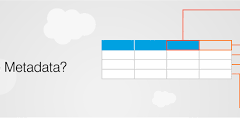What is a Data Culture? A Data Culture is the collective behaviors and beliefs of people who value, practice, and encourage the use of data to improve decision-making. As a result, data is woven into the operations, mindset, and identity of an organization.
Why is a data culture important? It enables more informed decision-making. With a data culture in place, decisions at all levels of the organization are based on data-driven insights rather than intuition or guesswork. This leads to more effective strategies and better outcomes.
What is the difference in data culture and data strategy? Gartner defines data strategy as “a highly dynamic process employed to support the acquisition, organization, analysis, and delivery of data in support of business objectives.” In contrast, the culture around data comes together with data talent, data literacy, and data tools.
Build a Culture of Data
Building a data culture is crucial for companies to unlock valuable insights and make smarter, more strategic decisions. Here’s what leaders need to know to foster a data-driven environment:
- Start Small with a Use Case: Overcome analysis paralysis by starting with a small use case that demonstrates the value of a data culture. Choose a project that can showcase tangible results and promote the payoff with skeptics.
- Utilize Data Analysis: Data analysis surfaces actionable trends and patterns, enabling companies to capitalize on market opportunities faster, drive growth, foster innovation, and differentiate from competitors.
- Leverage Artificial Intelligence and Machine Learning: Artificial intelligence and machine learning help eliminate guesswork from decision-making processes, enabling employees to make informed decisions quickly and confidently.
- Focus on Strategic Work: When data analyses guide routine decisions, employees can dedicate more time to strategic work, leading to increased engagement and productivity.
- Empower the Right Team: Build a community of data champions by empowering the right team with diverse skills and perspectives. Include executives, line managers, data engineers, developers, and machine learning architects.
- Provide Training and Technology: Equip your team with comprehensive training and accessible technology to unlock hidden insights and make data-driven decisions effectively.
- Start Small and Iterate: Test assumptions on a small scale and iterate. Prioritize projects that yield financial wins and can be scaled for maximum impact.
- Prioritize the Human Element: Ensure team members review raw data analyses to understand downstream utilization and avoid bias. Human insight is essential for interpreting data accurately and drawing meaningful conclusions.
- Encourage Experimentation: Success in building a data culture takes time and experimentation. Encourage a culture of experimentation and innovation, as inaction poses a greater risk than being data-driven.
By following these steps and prioritizing the development of a data culture, leaders can empower their organizations to make informed decisions, drive growth, and stay ahead of the competition in today’s data-driven world.
Data Maturity
Understanding data maturity is crucial for organizations as it provides a framework for assessing their current state of data management and analytics capabilities. It serves as a tool to guide decision-making and prioritize initiatives aimed at advancing the organization’s data capabilities. By evaluating data maturity, organizations can identify gaps, set goals, and determine the necessary steps to progress along their data journey.
Data maturity assessment typically involves evaluating various aspects of data management, including data governance, data quality, data infrastructure, analytics capabilities, and organizational culture around data. Based on the assessment, organizations can identify areas of strength and weakness and develop a roadmap for improvement.
Furthermore, understanding data maturity enables organizations to track their progress over time. By periodically reassessing data maturity, organizations can measure how much they have advanced and identify areas that still require attention. This iterative process allows organizations to continuously improve their data capabilities and adapt to evolving business needs and technological advancements.
In summary, understanding data maturity allows organizations to:
- Assess their current state of data management and analytics capabilities.
- Identify gaps and areas for improvement.
- Set goals and prioritize initiatives to advance data capabilities.
- Track progress over time and measure the impact of efforts to improve data maturity.
- Continuously adapt and improve to meet evolving business needs and technological advancements.













